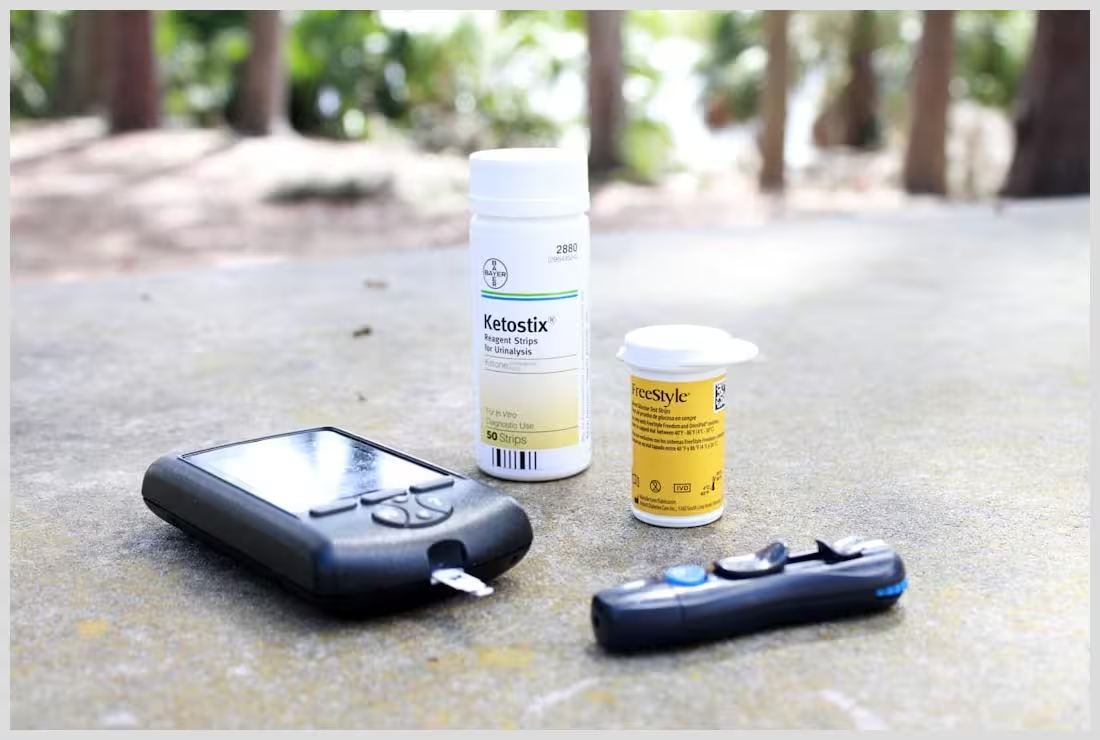In this article:
In this extensive article, we explore the fundamentals of WordPress version control, the power of modular integration, and how these concepts combine to create efficient workflows for website maintenance. We will walk you through setting up version control with Modular DS, compare it with other tools, and share best practices and real-world examples.
Key points covered include
- Understanding WordPress version control basics and terminology
- The role and benefits of modular integration in site maintenance
- Step-by-step setup of version control using Modular DS
- Comparisons with other WordPress management platforms
- Advanced workflows including CI/CD integration
- Common challenges and practical solutions
- User feedback and case studies highlighting Modular DS
- Future trends in WordPress maintenance automation
Introduction to WordPress Version Control and Modular Integration for Website Maintenance
Version control is a system that records changes to files over time so you can recall specific versions later. For WordPress websites, this means tracking changes in themes, plugins, and core files, which is crucial for maintaining site stability and security. Modular integration refers to breaking down maintenance tasks into manageable, automated modules that work together seamlessly.
Integrating version control with modular workflows allows developers and site managers to collaborate more effectively, reduce downtime during updates, and maintain a secure environment. This approach is especially valuable for small to medium-sized businesses, freelancers, and digital marketing professionals who juggle multiple WordPress sites.
Modular DS is a cloud-based SaaS platform designed to centralize and automate WordPress site management. It offers Git integration for version control, automated backups, uptime monitoring, security scans, and white-label client reporting. This platform exemplifies how modular design and version control integration can transform website maintenance.
Throughout this guide, you will learn how to leverage these tools and concepts to streamline your WordPress maintenance workflows and improve your site’s performance and security.
Benefits and Risks of WordPress Version Control with Modular Integration
Benefits
Streamlines website maintenance by automating backups, updates, and security scans.
Enhances collaboration with Git-based version control, preventing overwrites and tracking changes.
Supports unlimited WordPress sites, ideal for agencies and freelancers managing multiple clients.
Integrates modular workflows enabling CI/CD practices for automated testing and deployment.
White-label client reporting improves transparency and professionalism.
Risks
Merge conflicts can occur when multiple changes affect the same files, requiring careful resolution.
Overcomplicated automation setups may lead to errors and confusion if not managed properly.
Requires training and documentation to ensure team members understand Git and modular workflows.
Automation should be balanced with manual oversight for critical updates and security patches.
GDPR compliance and data privacy require careful platform selection and configuration.
The Basics of WordPress Version Control
Version control in WordPress management means using software tools to track and manage changes to your website’s files. The most common system is Git, which allows you to save snapshots of your site’s code, revert to previous states, and collaborate with others without overwriting each other’s work.
Subversion (SVN) is another version control system, but Git has become the industry standard due to its flexibility and distributed nature. For WordPress, version control is especially useful for managing custom themes, plugins, and core modifications.
Key terms to understand include
- Commit Saving a snapshot of your changes.
- Branch A parallel version of your code to work on features or fixes without affecting the main site.
- Merge Combining changes from different branches.
- Repository The storage location for your version-controlled files.
Using version control helps prevent accidental overwrites, facilitates teamwork, and provides a history of changes that can be audited or rolled back if needed.
The Role of Modular Integration in WordPress Maintenance
Modular integration means breaking down your WordPress maintenance into distinct, manageable parts or modules. Each module handles a specific task such as plugin updates, backups, security scans, or uptime monitoring.
This approach allows you to automate routine tasks, reduce errors, and scale your maintenance efforts as your number of websites grows. Modular workflows can be configured to trigger actions based on events, like running a backup before applying plugin updates.
When combined with version control, modular integration supports continuous integration and continuous deployment (CI/CD) practices. This means updates can be tested, deployed, and rolled back automatically, minimizing downtime and improving site reliability.
Examples of modules include
- Automated plugin and theme updates
- Scheduled backups with cloud storage
- Real-time uptime and security monitoring
- Client reporting and white-label dashboards
This modular design is key to efficient WordPress site upkeep, especially for agencies and freelancers managing multiple client websites.
Step-by-Step Guide to Setting Up WordPress Version Control with Modular DS
Modular DS is a powerful platform that integrates Git-based version control with modular workflows to automate WordPress maintenance. Here’s how to get started
- Create an account on Modular DS and log in to the dashboard.
- Connect your WordPress sites by entering site URLs and API keys. Modular DS supports unlimited sites, making it ideal for agencies.
- Configure Git integration by linking your repositories. This enables tracking of changes in themes, plugins, and custom code.
- Set up modular workflows to automate tasks like backups, plugin updates, and security scans. You can customize schedules and alerts.
- Manage updates through the platform’s interface, applying bulk updates safely with version control safeguards.
- Schedule backups with cloud storage options and verify backup integrity automatically.
- Enable uptime and security monitoring to receive real-time alerts on site performance and vulnerabilities.
- Use white-label client reporting to generate professional reports that keep your clients informed.
This setup streamlines your WordPress version management and site maintenance, reducing manual work and improving reliability.
Comparing Modular DS with Other WordPress Version Control and Management Tools
There are many WordPress management tools available, each with different strengths. Here’s how Modular DS stacks up against popular alternatives
| Feature | Modular DS | ManageWP | MainWP | InfiniteWP | WP Umbrella |
|---|---|---|---|---|---|
| Version Control Integration | Full Git integration with modular workflows | Limited | Requires plugins | Requires plugins | Limited |
| Automated Backups | Yes, cloud storage included | Yes | Yes | Yes | Yes |
| Uptime & Security Monitoring | Real-time with alerts | Yes | Limited | Limited | Yes |
| Client Reporting | White-label, customizable | Basic | Basic | Basic | Basic |
| Pricing | Lifetime deal available | Subscription-based | Free + paid extensions | Free + paid extensions | Subscription-based |
| Multilingual Support | English & Spanish | English | English | English | English |
| Scalability | Unlimited sites | Limited | Limited | Limited | Limited |
Modular DS stands out for its full Git integration, modular automation, and scalable pricing model, making it a strong choice for agencies and freelancers managing many WordPress sites.
 How to Protect WordPress Admin Panel from Brute Force Attacks
How to Protect WordPress Admin Panel from Brute Force AttacksMastering WordPress Version Control & Modular Integration: Practical Tips for Efficient Website Maintenance
Version Control Basics
- Use Git for tracking changes in themes, plugins, and core files.
- Understand key terms: commit, branch, merge, repository.
- Prevent overwrites and enable easy rollback to previous versions.
- Collaborate effectively with team members using branches and merges.
Modular Integration Advantages
- Break maintenance into automated modules: backups, updates, security scans.
- Automate routine tasks to reduce errors and save time.
- Combine with version control for CI/CD workflows to minimize downtime.
- Use client reporting modules for transparent communication.
Setup & Best Practices
- Create clear workflows for commits, branches, and merges to avoid conflicts.
- Automate backups and security scans before applying updates.
- Keep detailed documentation and train your team on Git and modular tools.
- Regularly audit repositories and backups to prevent data loss.
Common Challenges & Solutions
- Resolve merge conflicts carefully using Git tools and thorough testing.
- Use scalable platforms like Modular DS for managing multiple sites.
- Balance automation with manual oversight for critical updates.
- Ensure GDPR compliance by selecting platforms with strict data policies.
Advanced Workflows & Automation
- Integrate CI/CD pipelines to automate testing and deployment.
- Run automated tests on themes and plugins before deployment.
- Automatically roll back changes if tests fail to ensure stability.
- Speed up development cycles, especially for agencies managing many sites.
Best Practices for WordPress Version Control and Modular Integration
To get the most out of WordPress version control and modular integration, consider these best practices
- Define clear workflows for commits, branches, and merges to avoid conflicts.
- Automate backups and security scans before applying updates.
- Use modular workflows to separate concerns and simplify troubleshooting.
- Keep detailed documentation of your version control and integration processes.
- Train your team on Git basics and modular DS features to ensure smooth collaboration.
- Regularly audit your repositories and backups to prevent data loss.
- Communicate transparently with clients using white-label reports.
Following these guidelines helps maintain site stability, security, and performance while reducing manual workload.
Common Challenges and How to Overcome Them in WordPress Version Control Integration
Integrating version control with WordPress maintenance can present challenges such as merge conflicts, managing multiple site configurations, and balancing automation with manual oversight.
Merge conflicts happen when different changes affect the same file lines. To resolve them, use Git tools to review conflicts carefully and test thoroughly before deployment.
Managing many sites requires scalable tools like Modular DS that support unlimited sites and customizable workflows.
Automation is powerful but should be complemented with manual checks for critical updates or security patches.
Ensure GDPR compliance by choosing platforms with European servers and strict data policies.
When errors occur, consult Modular DS’s documentation and support to troubleshoot Git integration or workflow issues.
Advanced Use Cases: Continuous Integration and Deployment for WordPress Sites
Continuous Integration and Continuous Deployment (CI/CD) are development practices that automate testing and deployment of code changes. For WordPress, this means every update can be tested and deployed automatically, reducing downtime and errors.
Modular DS supports integration with CI/CD pipelines, allowing you to automate tasks such as
- Running automated tests on themes and plugins
- Deploying updates to staging and production environments
- Rolling back changes if tests fail
This advanced workflow improves reliability and speeds up development cycles, especially for agencies managing multiple client sites.

WordPress version control integration modulards guide
Tips and Common Mistakes in WordPress Version Control and Modular Integration
Keep your workflows simple and avoid overcomplicating automation. Overly complex setups can lead to errors and confusion.
Regularly update your repositories and audit backups to ensure data integrity.
Never skip backups, even if automation is in place.
Train all team members on version control basics to avoid mistakes like committing sensitive data or overwriting changes.
Test updates on staging environments before pushing to live sites to prevent downtime.
User Opinions and Real Feedback on Modular DS and WordPress Version Control Solutions
Users praise Modular DS for its intuitive interface, powerful automation, and comprehensive version control integration. Agencies report significant time savings managing dozens of client sites.
Clients appreciate the white-label reporting and real-time alerts that improve transparency and trust.
 Best Practices for WordPress Custom Code Management Across Multiple Sites
Best Practices for WordPress Custom Code Management Across Multiple SitesSome users suggest improvements in onboarding documentation and additional integrations, but overall feedback highlights Modular DS as a reliable and scalable platform.
“Modular DS transformed how we manage client sites. The Git integration and automated workflows save us hours every week.” – Agency Owner
How Modular DS Enhances Website Maintenance Through Version Control Integration
Modular DS’s modular architecture allows you to automate backups, plugin updates, uptime monitoring, and security scans with ease. Its Git integration ensures every change is tracked and reversible, reducing risks during updates.
The platform supports unlimited WordPress sites, making it ideal for agencies and freelancers. Its white-label reporting tools help maintain professional client relationships.
With a lifetime deal option, Modular DS offers cost-effective scalability. The bilingual interface and responsive support further enhance user experience.

WordPress version control integration modulards guide
Future Trends in WordPress Version Control and Modular Integration
AI and machine learning will increasingly automate maintenance tasks, predict security threats, and optimize performance.
Security and compliance will remain top priorities, with platforms enhancing GDPR adherence and data protection.
Modular DS plans to expand features like advanced analytics, deeper CI/CD integration, and broader multilingual support.
Agencies and developers should prepare by adopting modular, automated workflows and staying current with emerging technologies.
Summary: Mastering WordPress Version Control Integration with Modular DS
Version control and modular integration are essential for efficient, secure WordPress website maintenance. They enable better collaboration, reduce downtime, and automate routine tasks.
Modular DS stands out as a comprehensive platform combining Git integration with modular workflows, scalable pricing, and client-focused features.
Implementing these best practices and tools will help you maintain high-performing, secure WordPress sites with less effort.
Comprehensive FAQ on WordPress Version Control and Modular Integration
What is the easiest way to start version control for WordPress?
Begin by setting up a Git repository for your theme or plugin files and using a platform like Modular DS to manage changes and automate workflows.
Can Modular DS handle unlimited WordPress sites?
Yes, Modular DS supports unlimited sites, making it ideal for agencies and freelancers managing multiple clients.
How does version control improve website security?
By tracking changes, version control helps identify unauthorized modifications and enables quick rollback to safe versions.
What are the costs associated with Modular DS?
Modular DS offers a lifetime deal and subscription plans; pricing details are available on their pricing page .
How to troubleshoot common Git integration issues?
Check repository permissions, resolve merge conflicts carefully, and consult Modular DS support or documentation for guidance.
Is Modular DS suitable for freelancers and agencies alike?
Yes, its scalability and modular features cater to both individual professionals and larger teams.
Detailed Comparison Table: Modular DS vs. Leading WordPress Management Tools
| Feature | Modular DS | ManageWP | MainWP | InfiniteWP | WP Umbrella |
|---|---|---|---|---|---|
| Version Control Integration | Full Git integration with modular workflows | Limited | Requires plugins | Requires plugins | Limited |
| Automated Backups | Yes, cloud storage included | Yes | Yes | Yes | Yes |
| Uptime & Security Monitoring | Real-time with alerts | Yes | Limited | Limited | Yes |
| Client Reporting | White-label, customizable | Basic | Basic | Basic | Basic |
| Pricing | Lifetime deal available | Subscription-based | Free + paid extensions | Free + paid extensions | Subscription-based |
| Multilingual Support | English & Spanish | English | English | English | English |
| Scalability | Unlimited sites | Limited | Limited | Limited | Limited |
Practical Examples and Case Studies Using Modular DS
An agency managing over 50 client sites reported a 70% reduction in maintenance time by automating backups, plugin updates, and uptime monitoring with Modular DS. The platform’s Git integration allowed safe deployment of custom theme changes across multiple sites.
A freelancer streamlined plugin updates and client reporting, improving client satisfaction and freeing time for development work.
A small business owner improved site uptime and security monitoring, receiving real-time alerts that prevented costly downtime.
These cases demonstrate how Modular DS’s modular design and version control integration deliver tangible benefits across different user profiles.
Glossary of Key Terms in WordPress Version Control and Modular Integration
- Version Control System to track and manage changes to code or files.
- Git Popular distributed version control system.
- Repository Storage location for version-controlled files.
- Commit Saving a snapshot of changes.
- Branch Parallel version of code for development.
- Merge Combining changes from different branches.
- Modular Integration Breaking down maintenance into automated modules.
- CI/CD Continuous Integration and Continuous Deployment workflows.
- Backup Copy of site data for recovery.
- Uptime Monitoring Tracking site availability.
- White-label Reporting Customizable client reports without branding.
Final Recommendations and Call to Action
Adopting version control and modular integration is no longer optional for WordPress professionals who want to maintain secure, reliable, and scalable websites. Modular DS offers a comprehensive platform that combines these capabilities with automation and client management tools.
Explore Modular DS today and transform your WordPress maintenance workflow by signing up at https://modulards.com/en/?fpr=bilbo . Don’t miss the opportunity to leverage its lifetime deal and powerful features to save time and improve your service quality.
Sources and Further Reading
Frequently Asked Questions
What is the easiest way to start version control for WordPress?
Start by using Git to track your theme and plugin files, and consider platforms like Modular DS to simplify integration and automation.
Can Modular DS handle unlimited WordPress sites?
Yes, it supports unlimited sites, ideal for agencies and freelancers managing many clients.
How does version control improve website security?
It tracks all changes, making it easier to spot unauthorized edits and revert to safe versions quickly.
What are the costs associated with Modular DS?
Modular DS offers subscription plans and a lifetime deal; check their pricing page for details.
How to troubleshoot common Git integration issues?
Check repository permissions, resolve conflicts carefully, and use Modular DS support resources.
Is Modular DS suitable for freelancers and agencies alike?
Yes, its scalability and modular features cater to both individual professionals and larger teams.
What do you think about integrating version control with modular workflows for WordPress? Have you tried Modular DS or other tools? How would you like to improve your website maintenance process? Share your thoughts and questions in the comments below!
















